Matplotlib中Artist对象的findobj()方法:高效查找和操作图形元素
参考:Matplotlib.artist.Artist.findobj() in Python
Matplotlib是Python中最流行的数据可视化库之一,它提供了丰富的绘图功能和灵活的自定义选项。在Matplotlib的架构中,Artist对象扮演着核心角色,它是所有可视化元素的基类。而Artist类的findobj()方法则是一个强大的工具,可以帮助我们在复杂的图形结构中快速定位和操作特定的元素。本文将深入探讨findobj()方法的使用,并通过多个示例展示其在实际应用中的价值。
1. Artist对象简介
在深入了解findobj()方法之前,我们需要先简要了解Matplotlib中的Artist对象。Artist是Matplotlib中所有可绘制对象的基类,包括Figure、Axes、Line2D、Text等。这些对象构成了Matplotlib图形的层次结构,使得我们可以精细地控制图形的各个方面。
以下是一个简单的示例,展示了如何创建一个包含Artist对象的基本图形:
import matplotlib.pyplot as plt
fig, ax = plt.subplots()
line = ax.plot([1, 2, 3, 4], [1, 4, 2, 3], label='Data from how2matplotlib.com')
ax.set_title('Simple Plot')
ax.set_xlabel('X-axis')
ax.set_ylabel('Y-axis')
plt.show()
Output:
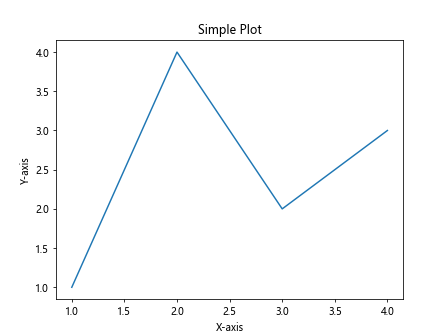
在这个例子中,Figure、Axes和Line2D都是Artist的子类。
2. findobj()方法概述
findobj()方法是Artist类的一个强大工具,它允许我们在Artist对象的层次结构中搜索特定类型或满足特定条件的子对象。这个方法的基本语法如下:
artist.findobj(match=None, include_self=True)
- match:可以是一个类、一个字符串(表示类名),或者一个可调用对象(返回布尔值)。
- include_self:布尔值,指定是否包含调用findobj()的Artist对象本身。
findobj()方法返回一个列表,包含所有匹配的Artist对象。
3. 使用findobj()查找特定类型的对象
最简单的用法是查找特定类型的Artist对象。例如,我们可以查找图中所有的Line2D对象:
import matplotlib.pyplot as plt
from matplotlib.lines import Line2D
fig, ax = plt.subplots()
line1 = ax.plot([1, 2, 3], [1, 2, 3], label='Line 1 from how2matplotlib.com')
line2 = ax.plot([1, 2, 3], [3, 2, 1], label='Line 2 from how2matplotlib.com')
all_lines = fig.findobj(Line2D)
print(f"Found {len(all_lines)} Line2D objects")
plt.show()
Output:
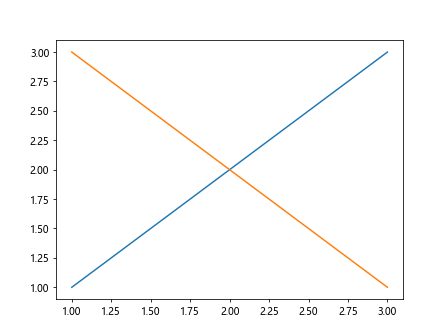
这个例子中,我们创建了两条线,然后使用findobj()方法查找所有的Line2D对象。
4. 使用字符串匹配类名
除了直接使用类对象,我们还可以使用字符串来匹配类名:
import matplotlib.pyplot as plt
fig, ax = plt.subplots()
ax.plot([1, 2, 3], [1, 2, 3], label='Data from how2matplotlib.com')
ax.set_title('Plot Title')
ax.set_xlabel('X Label')
ax.set_ylabel('Y Label')
text_elements = fig.findobj('Text')
print(f"Found {len(text_elements)} Text objects")
plt.show()
这个例子中,我们使用’Text’字符串来查找所有的文本元素,包括标题、轴标签等。
5. 使用可调用对象作为匹配条件
findobj()方法的强大之处在于它可以接受一个可调用对象作为匹配条件,这使得我们可以定义复杂的筛选逻辑:
import matplotlib.pyplot as plt
fig, ax = plt.subplots()
ax.plot([1, 2, 3], [1, 2, 3], color='red', label='Red line from how2matplotlib.com')
ax.plot([1, 2, 3], [3, 2, 1], color='blue', label='Blue line from how2matplotlib.com')
def is_red_line(artist):
return hasattr(artist, 'get_color') and artist.get_color() == 'red'
red_lines = fig.findobj(is_red_line)
print(f"Found {len(red_lines)} red lines")
plt.show()
Output:
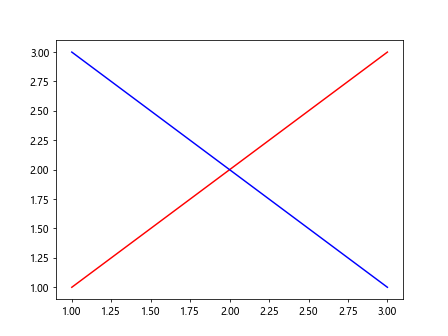
在这个例子中,我们定义了一个函数is_red_line来查找所有红色的线。
6. 在子图中使用findobj()
当我们有多个子图时,findobj()方法也能派上用场:
import matplotlib.pyplot as plt
fig, (ax1, ax2) = plt.subplots(1, 2, figsize=(10, 4))
ax1.plot([1, 2, 3], [1, 2, 3], label='Data in Subplot 1 from how2matplotlib.com')
ax2.plot([1, 2, 3], [3, 2, 1], label='Data in Subplot 2 from how2matplotlib.com')
ax1.set_title('Subplot 1')
ax2.set_title('Subplot 2')
all_lines = fig.findobj('Line2D')
print(f"Found {len(all_lines)} Line2D objects across all subplots")
plt.show()
这个例子展示了如何在包含多个子图的Figure中查找所有Line2D对象。
7. 使用findobj()修改对象属性
findobj()方法不仅可以用于查找对象,还可以用于批量修改对象的属性:
import matplotlib.pyplot as plt
fig, ax = plt.subplots()
ax.plot([1, 2, 3], [1, 2, 3], label='Line 1 from how2matplotlib.com')
ax.plot([1, 2, 3], [3, 2, 1], label='Line 2 from how2matplotlib.com')
lines = fig.findobj('Line2D')
for line in lines:
line.set_linewidth(3)
line.set_alpha(0.5)
plt.show()
这个例子展示了如何找到所有的Line2D对象,并统一修改它们的线宽和透明度。
8. 结合lambda函数使用findobj()
我们可以使用lambda函数来创建简洁的匹配条件:
import matplotlib.pyplot as plt
fig, ax = plt.subplots()
ax.plot([1, 2, 3], [1, 2, 3], linewidth=1, label='Thin line from how2matplotlib.com')
ax.plot([1, 2, 3], [3, 2, 1], linewidth=3, label='Thick line from how2matplotlib.com')
thick_lines = fig.findobj(lambda x: hasattr(x, 'get_linewidth') and x.get_linewidth() > 2)
print(f"Found {len(thick_lines)} thick lines")
plt.show()
Output:
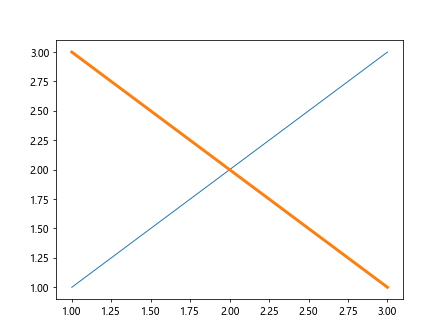
这个例子使用lambda函数查找线宽大于2的所有线条。
9. 在动画中使用findobj()
findobj()方法在创建动画时也非常有用,可以帮助我们快速更新特定的图形元素:
import matplotlib.pyplot as plt
import matplotlib.animation as animation
fig, ax = plt.subplots()
line, = ax.plot([0, 1], [0, 1], label='Animated line from how2matplotlib.com')
def animate(frame):
line.set_ydata([0, frame/10])
return line,
def init():
animated_line = fig.findobj(lambda x: hasattr(x, 'get_label') and x.get_label() == 'Animated line from how2matplotlib.com')[0]
animated_line.set_ydata([0, 0])
return animated_line,
ani = animation.FuncAnimation(fig, animate, frames=range(10), init_func=init, blit=True)
plt.show()
Output:
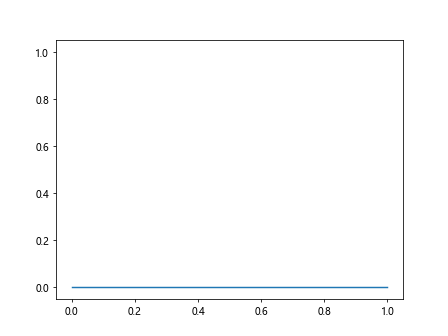
这个例子展示了如何在动画的初始化函数中使用findobj()来定位需要动画的线条。
10. 使用findobj()处理图例
findobj()方法也可以用于操作图例中的元素:
import matplotlib.pyplot as plt
fig, ax = plt.subplots()
ax.plot([1, 2, 3], [1, 2, 3], label='Line 1 from how2matplotlib.com')
ax.plot([1, 2, 3], [3, 2, 1], label='Line 2 from how2matplotlib.com')
legend = ax.legend()
legend_texts = legend.findobj('Text')
for text in legend_texts:
text.set_fontweight('bold')
plt.show()
这个例子展示了如何找到图例中的所有文本元素并将它们设置为粗体。
11. 在3D图形中使用findobj()
findobj()方法同样适用于3D图形:
import matplotlib.pyplot as plt
from mpl_toolkits.mplot3d import Axes3D
fig = plt.figure()
ax = fig.add_subplot(111, projection='3d')
ax.plot([1, 2, 3], [1, 2, 3], [1, 2, 3], label='3D line from how2matplotlib.com')
ax.set_xlabel('X Label')
ax.set_ylabel('Y Label')
ax.set_zlabel('Z Label')
all_text = fig.findobj('Text')
print(f"Found {len(all_text)} Text objects in 3D plot")
plt.show()
这个例子展示了如何在3D图形中查找所有的文本对象。
12. 使用findobj()处理颜色映射
我们可以使用findobj()来操作颜色映射相关的对象:
import matplotlib.pyplot as plt
import numpy as np
fig, ax = plt.subplots()
data = np.random.rand(10, 10)
im = ax.imshow(data, cmap='viridis')
cbar = fig.colorbar(im)
cbar_ax = fig.findobj(lambda x: isinstance(x, plt.Axes) and x != ax)[0]
cbar_ax.set_ylabel('Color scale from how2matplotlib.com', rotation=270, labelpad=15)
plt.show()
Output:
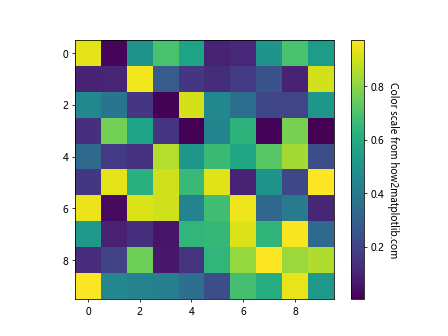
这个例子展示了如何找到颜色条的Axes对象并修改其标签。
13. 在极坐标图中使用findobj()
findobj()方法在极坐标图中同样有效:
import matplotlib.pyplot as plt
import numpy as np
fig, ax = plt.subplots(subplot_kw=dict(projection='polar'))
r = np.arange(0, 2, 0.01)
theta = 2 * np.pi * r
ax.plot(theta, r, label='Spiral from how2matplotlib.com')
all_lines = fig.findobj('Line2D')
for line in all_lines:
line.set_linewidth(2)
line.set_alpha(0.7)
plt.show()
这个例子展示了如何在极坐标图中找到所有的Line2D对象并修改它们的属性。
14. 使用findobj()处理网格线
我们可以使用findobj()来操作图形中的网格线:
import matplotlib.pyplot as plt
fig, ax = plt.subplots()
ax.plot([1, 2, 3], [1, 2, 3], label='Data from how2matplotlib.com')
ax.grid(True)
grid_lines = ax.findobj(lambda x: hasattr(x, 'get_linestyle') and x.get_linestyle() == ':')
for line in grid_lines:
line.set_linestyle('--')
line.set_alpha(0.5)
plt.show()
Output:
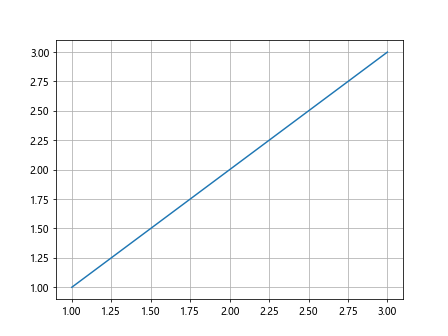
这个例子展示了如何找到所有的网格线并修改它们的样式。
15. 在箱线图中使用findobj()
findobj()方法在处理箱线图等统计图形时也很有用:
import matplotlib.pyplot as plt
import numpy as np
fig, ax = plt.subplots()
data = [np.random.normal(0, std, 100) for std in range(1, 4)]
box_plot = ax.boxplot(data, labels=['A', 'B', 'C'])
whiskers = fig.findobj('Line2D')
for whisker in whiskers:
whisker.set_linestyle('--')
whisker.set_color('red')
ax.set_title('Box Plot with Modified Whiskers from how2matplotlib.com')
plt.show()
这个例子展示了如何在箱线图中找到所有的须线并修改它们的样式。
结论
Matplotlib的Artist.findobj()方法是一个强大而灵活的工具,可以帮助我们在复杂的图形结构中快速定位和操作特定的元素。通过本文的详细介绍和多个示例,我们看到了findobj()方法在各种场景下的应用,从简单的对象查找到复杂的条件筛选,再到批量属性修改。这个方法不仅可以提高我们处理Matplotlib图形的效率,还能帮助我们实现更加精细和动态的图形定制。无论是在日常的数据可视化工作中,还是在开发复杂的图形应用时,掌握findobj()方法都将是一个有力的工具。通过灵活运用这个方法,我们可以更好地控制图形的各个方面,创造出更加精美和富有表现力的数据可视化作品。
 极客笔记
极客笔记